We've written a paper on online imitation learning, and our construction allows us to bound the extent to which mesa-optimizers could accomplish anything. This is not to say it will definitely be easy to eliminate mesa-optimizers in practice, but investigations into how to do so could look here as a starting point. The way to avoid outputting predictions that may have been corrupted by a mesa-optimizer is to ask for help when plausible stochastic models disagree about probabilities.
Here is the abstract:
In imitation learning, imitators and demonstrators are policies for picking actions given past interactions with the environment. If we run an imitator, we probably want events to unfold similarly to the way they would have if the demonstrator had been acting the whole time. No existing work provides formal guidance in how this might be accomplished, instead restricting focus to environments that restart, making learning unusually easy, and conveniently limiting the significance of any mistake. We address a fully general setting, in which the (stochastic) environment and demonstrator never reset, not even for training purposes. Our new conservative Bayesian imitation learner underestimates the probabilities of each available action, and queries for more data with the remaining probability. Our main result: if an event would have been unlikely had the demonstrator acted the whole time, that event's likelihood can be bounded above when running the (initially totally ignorant) imitator instead. Meanwhile, queries to the demonstrator rapidly diminish in frequency.
The second-last sentence refers to the bound on what a mesa-optimizer could accomplish. We assume a realizable setting (positive prior weight on the true demonstrator-model). There are none of the usual embedding problems here—the imitator can just be bigger than the demonstrator that it's modeling.
(As a side note, even if the imitator had to model the whole world, it wouldn't be a big problem theoretically. If the walls of the computer don't in fact break during the operation of the agent, then "the actual world" and "the actual world outside the computer conditioned on the walls of the computer not breaking" both have equal claim to being "the true world-model", in the formal sense that is relevant to a Bayesian agent. And the latter formulation doesn't require the agent to fit inside world that it's modeling).
Almost no mathematical background is required to follow [Edit: most of ] the proofs. [Edit: But there is a bit of jargon. "Measure" means "probability distribution", and "semimeasure" is a probability distribution that sums to less than one.] We feel our bounds could be made much tighter, and we'd love help investigating that.
These slides (pdf here) are fairly self-contained and a quicker read than the paper itself.

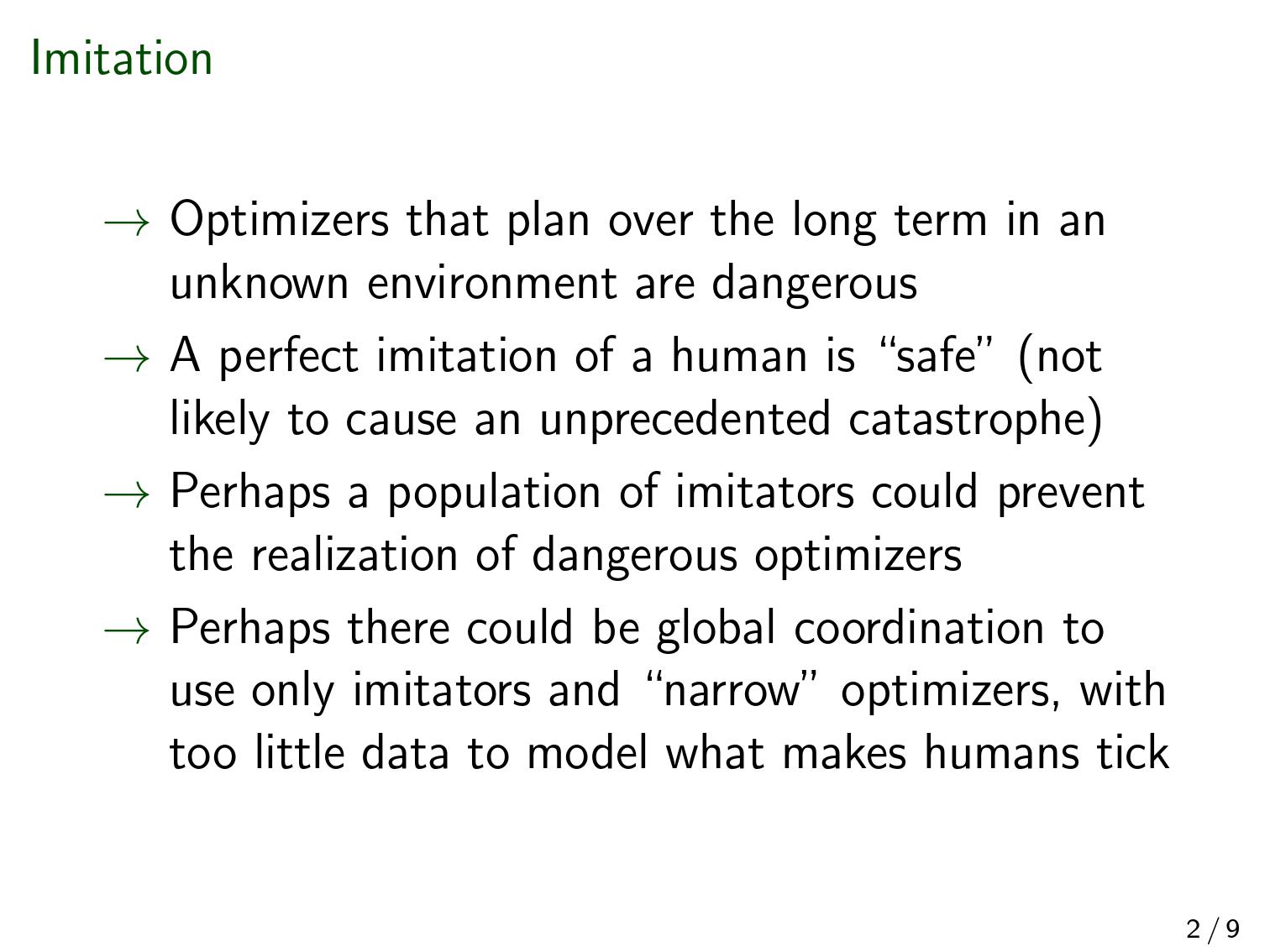


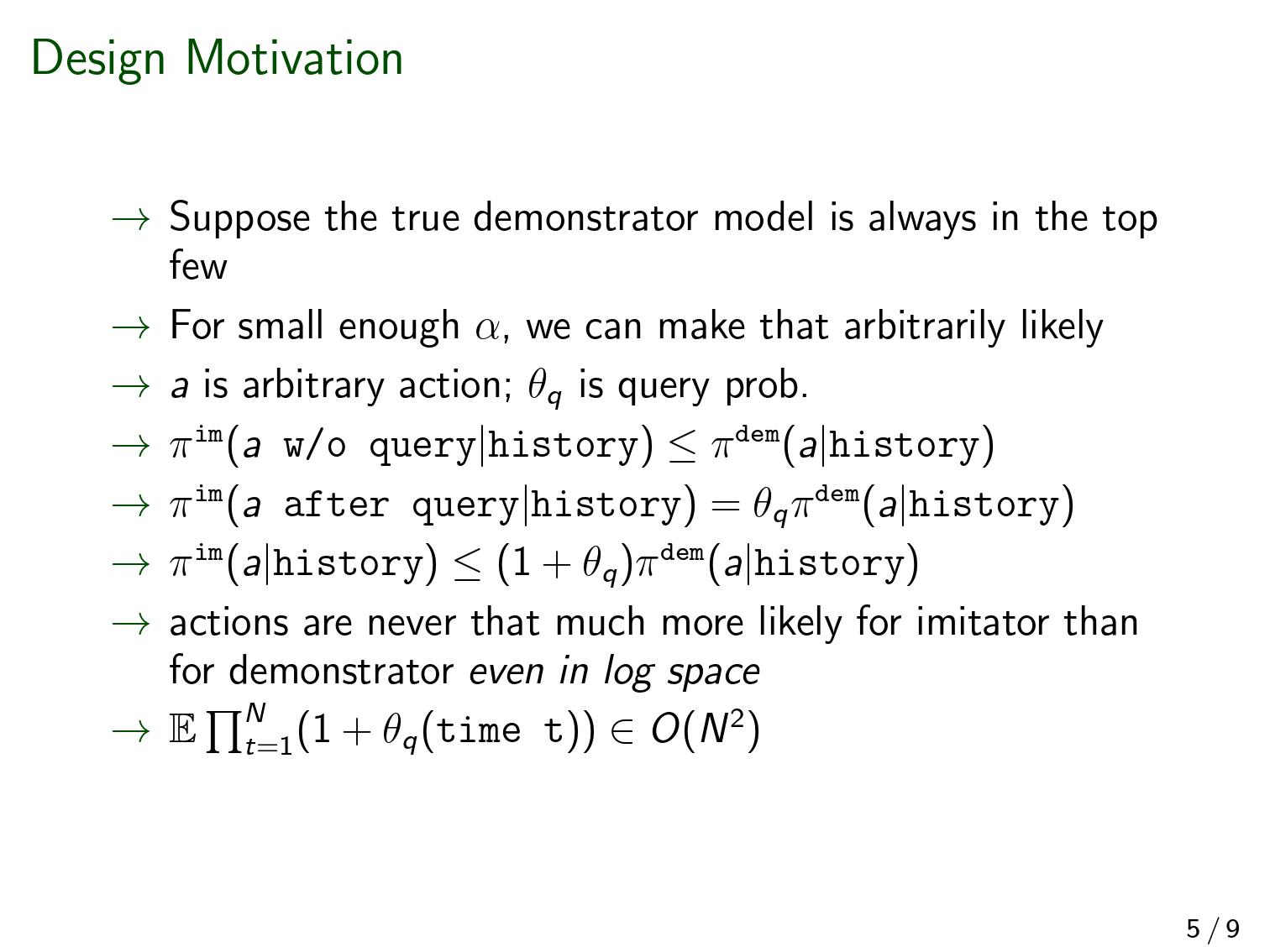
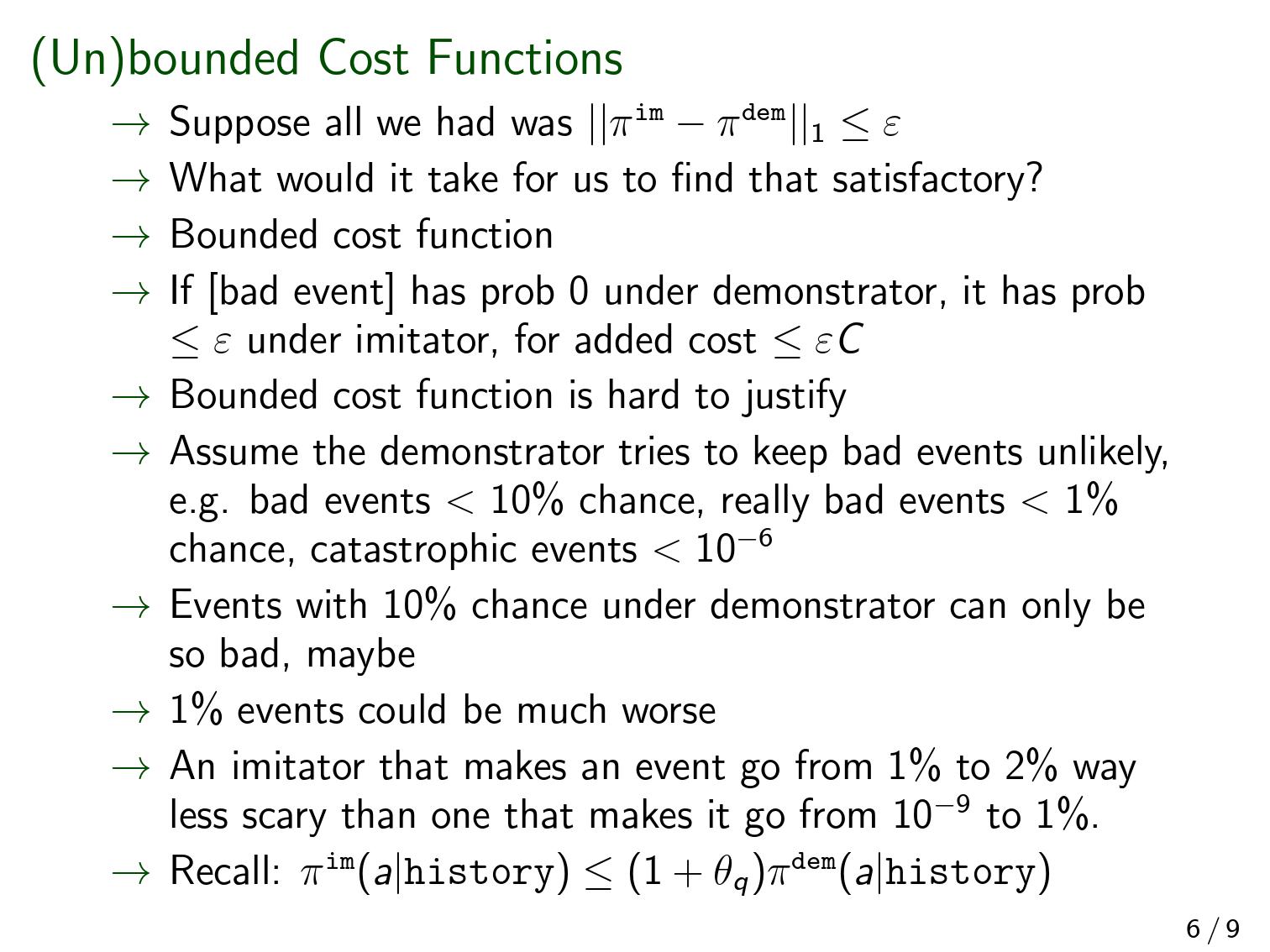
Below, and refer to the probability of the event supposing the demonstrator or imitator were acting the entire time. The limit below refers to successively more unlikely events ; it's not a limit over time. Imagine a sequence of events such that .
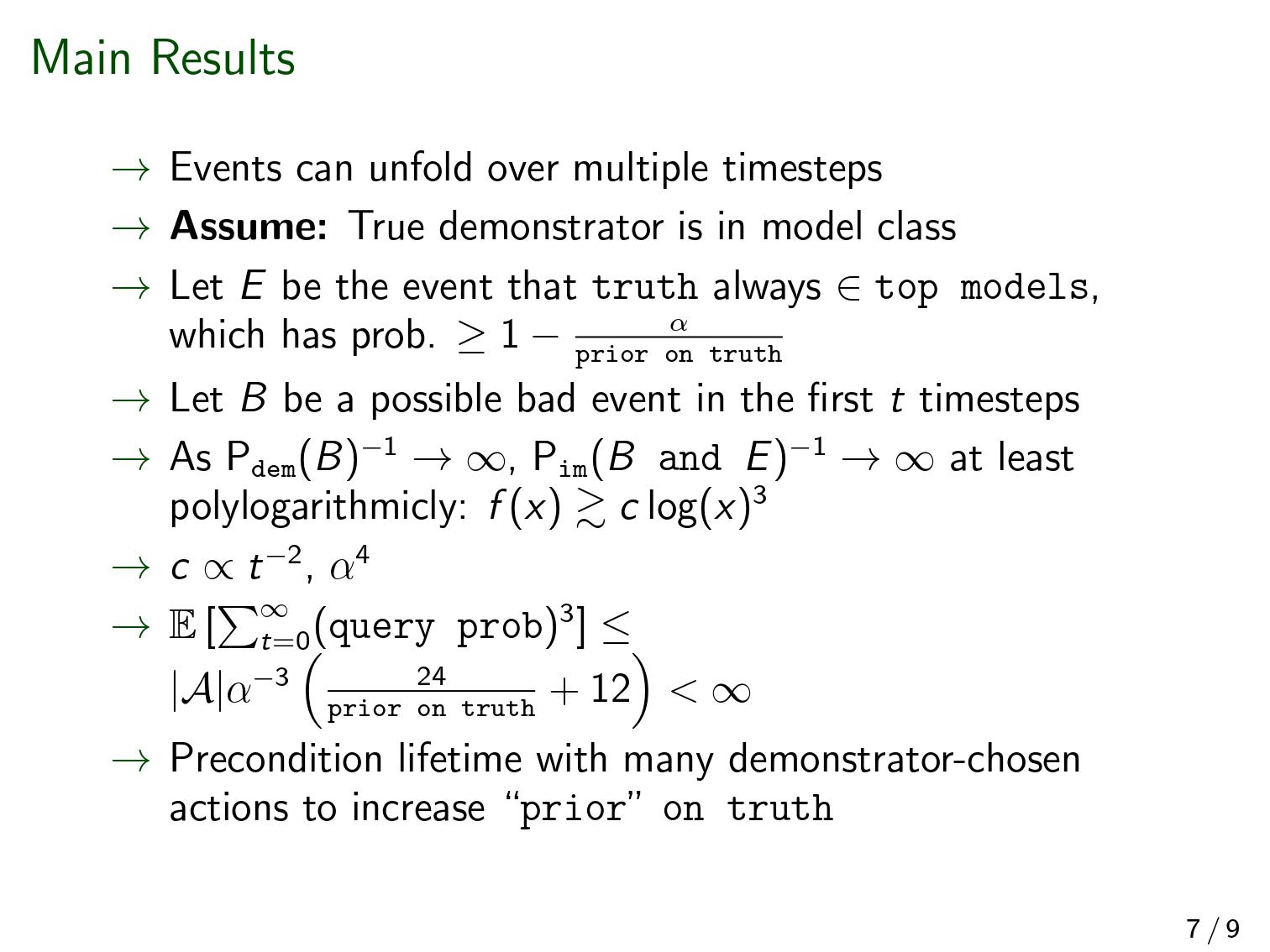
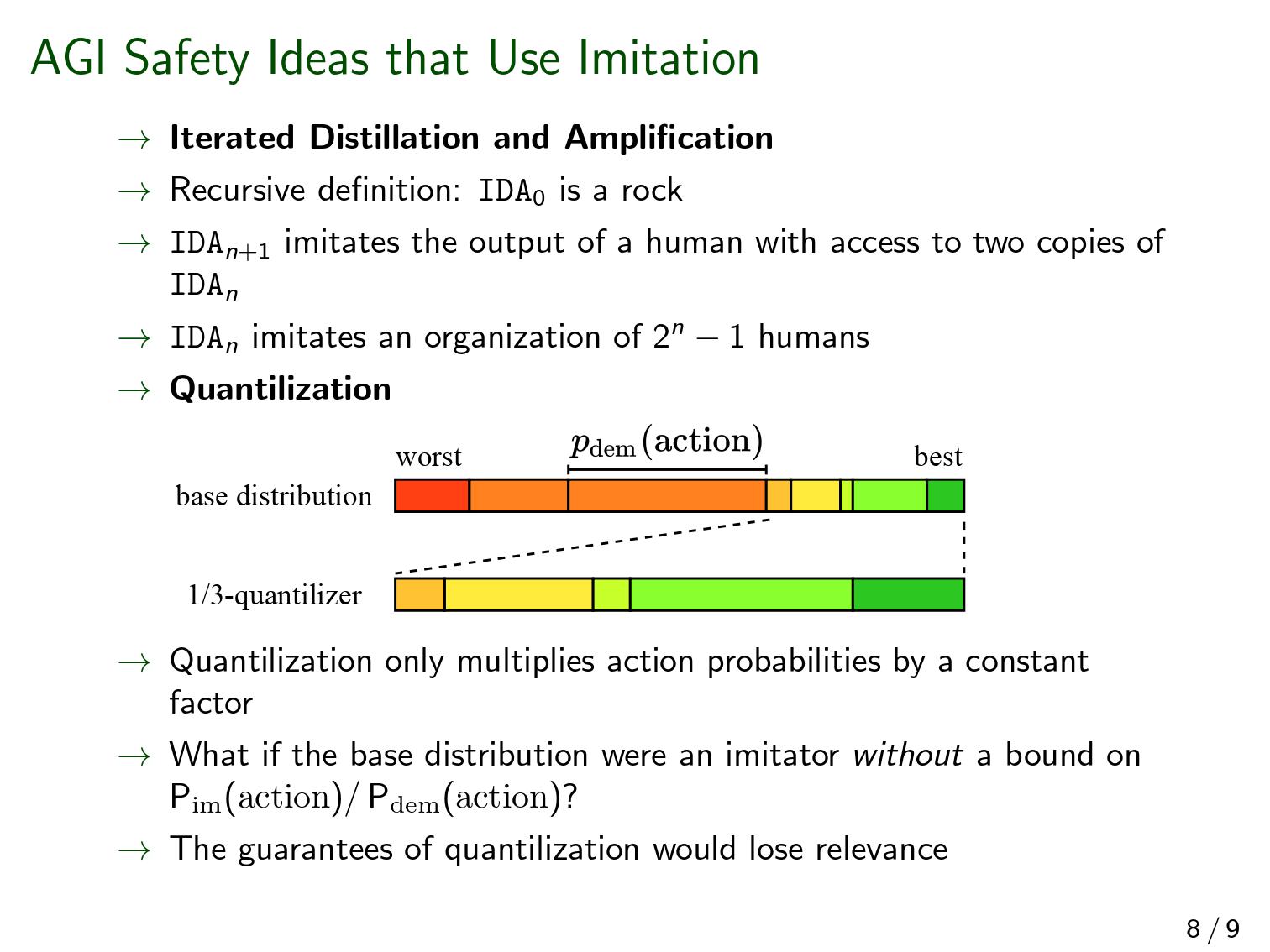
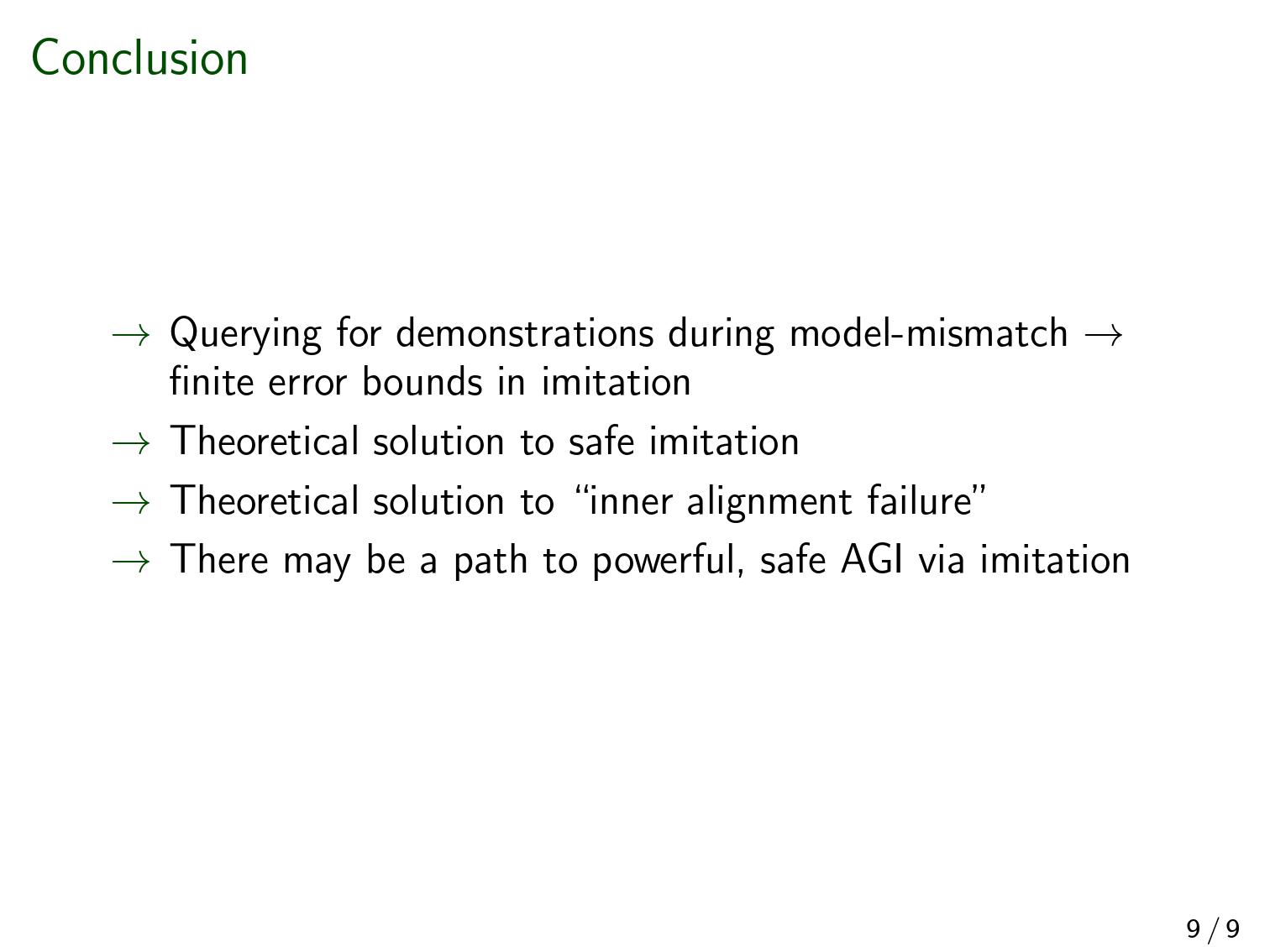
I think it works differently. What you should get is an infra-Bayesian hypothesis which models only those parts of reality that can be modeled within the given computing resources. More generally, if you don't endorse the predictions of the prediction algorithm than either you are wrong or you should use a different prediction algorithm.
How the can the laws of physics be extra-compressible within the context of a simulation hypothesis? More compression means more explanatory power. I think that is must look something like, we can use the simulation hypothesis to predict the values of some of the physical constants. But, it would require a very unlikely coincidence for physical constants to have such values unless we are actually in a simulation.
I agree that we won't have a perfect match but I think we can get a "good enough" match (similarly to how any two UTMs that are not too crazy give similar Solomonoff measures.) I think that infra-Bayesianism solves a lot of philosophical confusions, including anthropics and logical uncertainty, although some of the details still need to be worked out. (But, I'm not sure what specifically do you mean by "logical facts they observe during evolution"?) Ofc this doesn't mean I am already able to fully specify the correct infra-prior: I think that would take us most of the way to AGI.
I have all sorts of ideas, but still nowhere near the solution ofc. We can do deep learning while randomizing initial conditions and/or adding some noise to gradient descent (e.g. simulated annealing), producing a population of networks that progresses in an evolutionary way. We can, for each prediction, train a model that produces the opposite prediction and compare it to the default model in terms of convergence time and/or weight magnitudes. We can search for the algorithm using meta-learning. We can do variational Bayes with a "multi-modal" model space: mixtures of some "base" type of model. We can do progressive refinement of infra-Bayesian hypotheses, s.t. the plausible hypotheses at any given moment are the leaves of some tree.
Well, we also don't have to find all of them: we just have to make sure we don't miss the true one. So, we need some kind of transitivity: if we find a hypothesis which itself finds another hypothesis (in some sense) then we also find the other hypothesis. I don't know how to prove such a principle, but it doesn't seem implausible that we can.
Why do you think "reasoning deductively" implies there is no simple algorithm? In fact, I think infra-Bayesian logic might be just the thing to combine deductive and inductive reasoning.